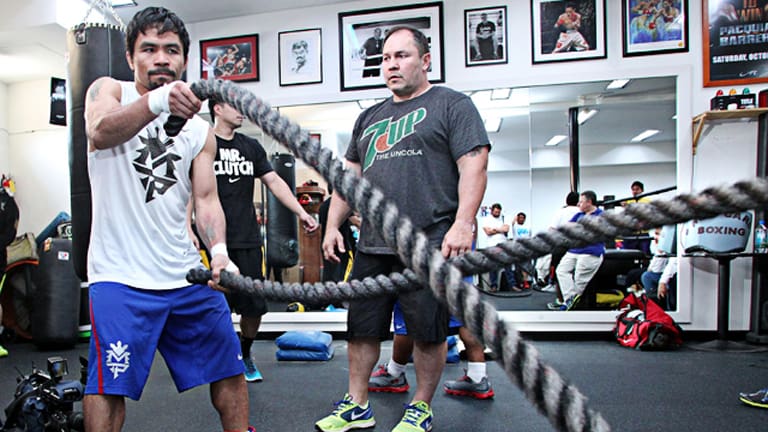
Every boxer has their own objectives. It can be fitness, amateur or professional fights, self defense, or something else. No matter what your endgame is, training efficiently will make sure you do not waste your time. Improving your boxing can only be beneficial to you.
Boxing and in general fighting sports are a life philosophy. Rigor, humility, courage are amazing qualities. Unfortunately, they are less and less important in today’s society. Boxing transmits those values, contributing to make fighter better people. It is not only about making the athlete stronger, faster, more technical. It’s also about making people better people.
We also live in a very sedentary world. This lifestyle induces many postural and psychological issues.
Rediscovering the enjoyment of physical effort is becoming a necessity. Especially when it contributes to knowing yourself better.
Boxing is a very complete sport that involves the entirety of muscular chains. It requires many physical, technical and mental qualities. It’s therefore an excellent remedy to repetitive and alienating jobs, which slowly ruin your health.
1. Functional analysis of boxing
Functional analysis of boxing is very important. That’s what is going to determinate what you work on, especially physically and technically. Having good movements is good, understanding them is better.
To perform in martial arts and combat sports you need a minimal amount of knowledge of the human body and how it works. You are not trying to replace your coach. You don’t need to know everything. But you should be able to have a minimal understanding of how what you’re doing works in term of body mechanic.
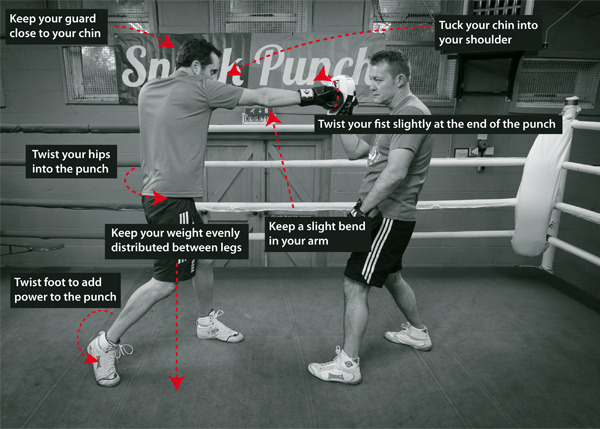
Understand what you’re doing
It’s always surprising to observe boxers with years of experience reproducing movements without understanding their deep mechanisms. If those fighters were to explain to beginners the major axis of their sport, it would probably be difficult.
Why do they move this way in particular? How are force and speed transmitted along the body? It can be done on an instinctive level. Or is it just because someone taught them this way? But learning without understanding is never a good idea.
To give an example, how do we generate power when punching in boxing ? It’s a fundamental question that few people would be able to answer correctly.
From a bio-mechanical point of view the best answer is the following. By exercising a force towards the ground through the legs forming a base, the boxer generates an acceleration that produces an accumulation of kinetic energy.
By realizing successive rotations, especially pelvic (hips line) and scapular (shoulder line), the boxer channels and transfers this power potential to their fists.
Focus on one thing at a time
Optimizing the movement aims to conserve or even amplify the generated energy while staying in a safe spot at the same time as punching.
It means that a beginner needs to work on transmitting this energy efficiently first. Getting the movement right. Then once they have the right movement, doing it faster and faster. Power will start coming into play once these two first steps are acquired and can be worked as a final component.
We can even go further by distinguishing the muscles producing the force (the lower body) from the ones transmitting that force (upper body).
Be aware of your whole body
Understanding the movement and its corporal organization will change everything. It will give you a great understanding of what you are learning. You will become naturally more aware of the placement of your feet and to the quality of your rotations. You also learn to relax. It will help smoothing your movements and how they follow each other.
Your learning process is guided and improved by your intellectual understanding of the movement. You give meaning to what you do and why you do it and it makes a difference.
Applying this advice will make you progress.
2. The tridimensional approach of performing for a boxer
Performing is conditioned by three factors: technical, physical and mental. These three factors will help you improve your boxing. They are linked together with a triangular relationship. They can both mutually reinforce each other or weaken each other. You have to develop both in a balanced manner.
A good brawler with no technical abilities will see that their progress is limited quickly. A great technician with no endurance will be too tired to show their skills.
A lot of trainers only focus on the technical part. The rest is up to you.
Therefore, it’s important that you understand the interaction between each part. It is also critical that you understand how they each influence your performance.
3. The technical preparation
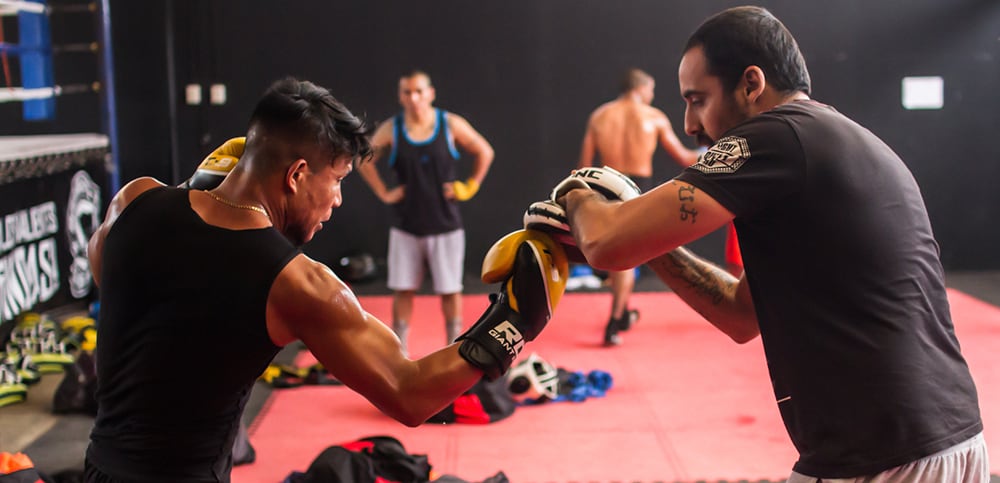
It corresponds first to a normal training session how everyone pictures them. Ideally these sessions are targeted. Progressively they will become more complex, and applied in sparring of different intensity.
Train logically
The different exercises must be articulated around one precise theme. It should follow an order and be integrated with the previous training.
The difficulty and context of the movements must be ascending and adapted to your current abilities. There are of course priorities in abilities acquisition.
It is useless to start working on “body rotating to dodge to counter attack body blow” if you are still a beginner. You should start by being comfortable with moving and handling distance.
Be realistic and work smartly without looking for the short path.
Go back to basics
The Cuban school is in this matter an example to follow. They are both humble and demanding, coming back to basics regularly. They are aware that training efficiently is not only about following a premade program. It should also point motor issues and come back to it.
This way if you have to spend an entire year on how to move or even restart from scratch, it is not an issue.
Be a creator, not a copycat
Another big principle is to not waste time reproducing stereotyped combination borrowed from some other boxer. You have to become a creator and not a vulgar copycat in order to be able to adapt to your opponent. In other word the technical arsenal of boxing needs to become your own. Build your solutions yourself by assembling pieces of the puzzle.
Going into the ring looking to stubbornly use your favorite combination is the best way to fail. You always have to take into account your opponents characteristics as he is right now. Indeed ,what was working yesterday can not work anymore. Do not get fooled by “killers” only practicing choreography.
If you come from a different striking sport, it’s also important that your study the differences. Contrary to what people might think, western boxing is not just Muay Thai with less weapons. The mobility, distance handling and defense are very different.
4. Physical preparation

Now comes the physical preparation, very important to progress in boxing.
Improving and preventing injuries
It corresponds to the improvement of different physical qualities (strength, speed, endurance, power, explosiveness etc.). It also concerns their transfer into the techniques and its help to prevent injuries.This last point is too often overlooked.
Yet it’s a short term work possibly endangering the boxer’s well being both right now and in the future. Boxers are known to not age well physically. Any possibility to improve their future physical condition should be mandatory.
Follow a program
Physical preparation respects a scientific approach. It requires to be knowledgeable in physiology, anatomy and bio-mechanical. Methods and exercises composing of this preparation are programmed following testing results.
Your competition schedules can also change your training calendar. You are not going to train the same in your off peak season as you would two weeks before a fight.
There are a lot of different workouts and ways of training that will be the object of a later article.
Boxing is enough only to a certain point. Training in the evening at the gym will only take you so far. To become better and break that ceiling, you have to work upstream on your body. It will compliment the other aspects of the sport.
Don’t rush things
It is important that you get advice from a professional. Don’t go blindly into a new training activity. Lifting weights to improve boxing is very different from lifting for aesthetic. In the same way running to improve rounds endurance is very different from training for a marathon. You need to be careful that your extra training is not being counter productive.
In the same way, nutrition plays a very important role in performance. It conditions how you react to effort. How you eat and and how you sleep will allow you to benefit fully or not from your training. This is why having a healthy lifestyle is so important. If you sleep four hours a night or skip meals, you will hinder your training. Despite all the efforts you put in your training, it will slow your progression.
The boxer should focus on polyarticular and explosive movements. It will help in developing their neuromuscular system. This system is responsible to deliver power (producing a lot of energy in the shortest amount of time). It also handles the coordination in synergic muscles.

There are lots of different muscle building methods out there, but we can quickly talk about a few.
Stato-dynamic training
Locking a movement for three second then finishing it at maximum intensity. Usually using about 60% of your max weight. For back squatting it would mean getting down in a controlled manner. Then pause on the way up at about mid way for three seconds, and finish by exploding on the way up.
Heavy / light lifting
Alternating lifting heavy weight and lifting light weight. 80-90% weight to focus on brute strength and 40-45% to focus more on speed.
Ballistic training
It revolves around pendulum movement like kettlebell swings. If done properly this kind of exercise will develop the whole body. The core especially will benefit from it. Anti-extension, anti-rotation and anti-lateral flexion are all involved.
It will help resist to punches but also recruit more power when punching, the core being the vessel to transfer power from the legs to the upper body.
Plyometric training
Great way for athletes to build explosive power. It will increase your footwork but also speed and strength. Progressing in plyometric exercises will translate directly into the ring
Tempo contrast
In the same series, alternating slow and controlled movements with fast and explosive one. The goal is to do a total of 8 to 12 repetition for a movement, alternating 2 slow / 2 fast.
To improve the cardiovascular system, HIIT (High Intensity Interval Training) is the favorite. It allows a person to reproduce the flow of a boxing match by alternating intense burst of energy and breaks.
5. Mental preparation
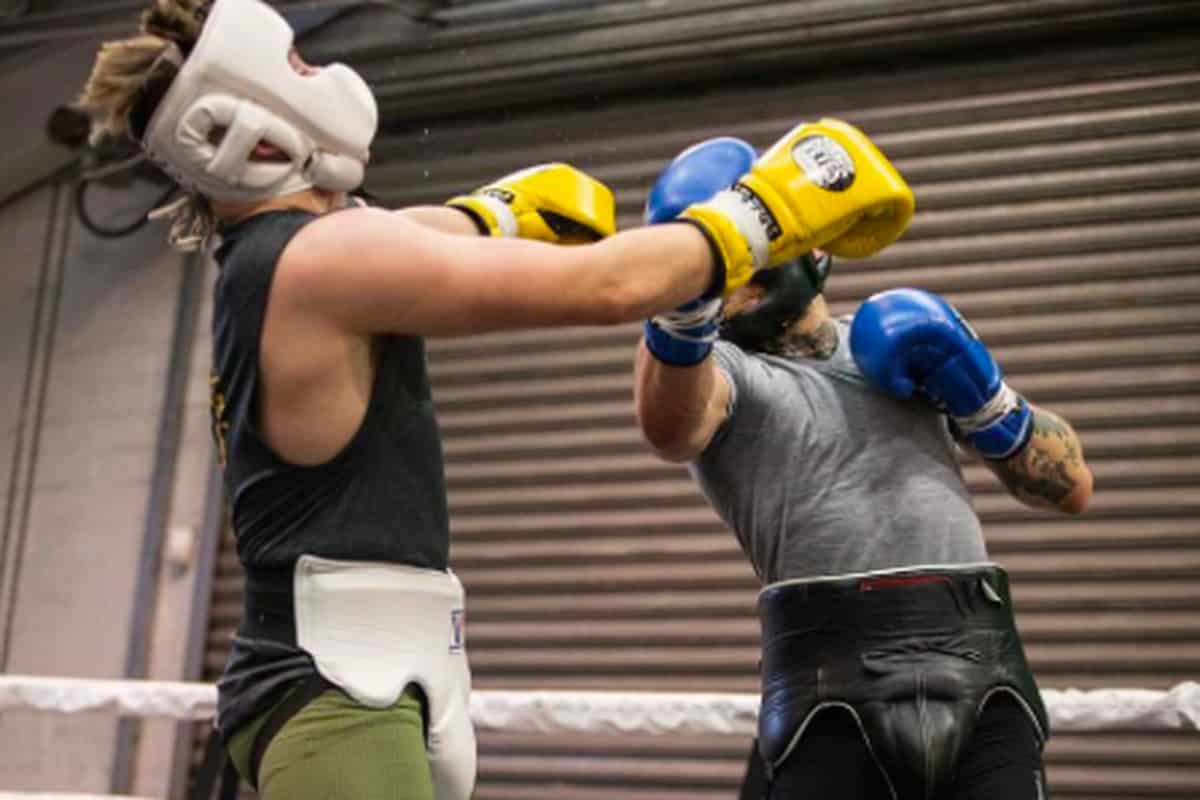
Sparring to get yourself ready
Finally, mental preparation designates your capacity to go “at war”.
Face the pain
Specifically, in the boxing contest it is your ability to endure powerful and repeated punches without losing your way. Staying cool and determined while facing adversity is a very important skill.
It’s the ultimate test that’s missing in a lot of martial art. Repeating choreographed movements with no real resistance and no fear of getting hit is not fighting.
Let’s be clear I’m not asking you to block punches with your head. But you need to get used to real confrontation.
It is critical to learn how to deal with pain and stress without panicking.
In order to do that you need to spar as much as possible. And if possible with opponents better and more aggressive than you. It’s only in doing that that you can hope go in the ring confident in your abilities. Boxers are hungry and they won’t spare you once facing them.
Face the fear
Even if you only train for self defense, you should put yourself in the scary and uncomfortable situation of sparring.
A stressed individual can see their cardiac rhythm go up by 300%. Their lactic acid production increases drastically. Their audio and visual abilities will deteriorate. All of that in only a few seconds. Imagine now that you are in a situation of aggression. You’ve never experienced violence and pain before and it is shocking. You are going to make stupid decisions that will put you in even more danger.
Your mental health has a big impact on your physical abilities. Your physical abilities then have a big impact on your technical abilities. It can make you extremely vulnerable by making you forget all of your martial abilities.
Between a black belt that never spars or fought in their life and someone who is used to street brawling but with no technical background, my money would be on the latter.
That’s why sparring is so important. Keeping your cool is what makes a good fighter, and you need first hand experience to be able to do it.
Meditation, Visualization and Yoga
In parallel to this fight conditioning, you can experiment different “mental workouts”.
Regular meditation will help you focus on your objectives. Remind yourself why you do all of this training. Remind yourself of your goals. You will find a new source of energy in this exercise.
Mental visualization has both a relaxing effect and an improvement effect. By visualizing the fight to come and its possible outcomes, you can think about possible solutions. It should not of course replace real training, but it can be a good complement.
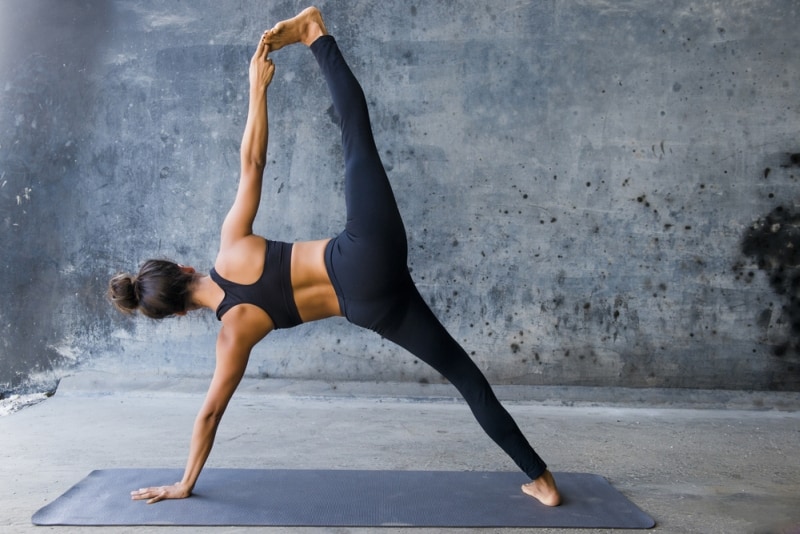
Yoga is not a workout reserved to middle age women wearing expensive lulu lemon yoga pants. It is also a good way to get a deep stretching. It will help with injury prevention and recovery. If you still have doubt about it, Floyd Mayweather incorporated Bikram Yoga into his preparation for his match against Conor McGregor.
On the mental side, yoga helps to re-center yourself, sharpening your motivation and focus.
Conclusion
Strategy and tactic preparation could also be added to this list. Unfortunately, it is so particular to each fighting situation that it is impossible to give general advice. It depends on the fighter you are facing, the rule-set you are competing in and the context you are fighting.
For example, a professional fighter versing a famous boxer with plenty of study material available (match tape, public sparing etc.) might shape a more or less precise game plan.
On the other hand, an amateur fighting another amateur will often have a hard time finding information on his opponent. And even if he did, amateurs can change their game entirely from one fight to another. It might then be in the best case useless and in the worst case detrimental.
In the end, any training needs fine tuning to correspond exactly to each individual. The couple of points seen in this article are easy to put in place though. They can have an important positive effect on your fighting abilities, so do not hesitate to give them a try!
Leave a Reply